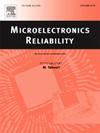Spacecraft sensor data reliability improvement based on spatio-temporal information fusion model
IF 1.9
4区 工程技术
Q3 ENGINEERING, ELECTRICAL & ELECTRONIC
引用次数: 0
Abstract
Spacecraft sensor data is crucial for evaluating the operating status and environment of spacecraft. However, due to factors such as component aging, space environment interference, and unstable satellite-to-ground communication, obtaining high-reliability sensor data is challenging. Additionally, the high dimensionality, complex correlations, strong temporal dependencies, and noise in sensor data further complicate efforts to improve data reliability. To address these challenges, this paper proposes a sensor reliability improvement method based on a multi-layer spatio-temporal information fusion model (STIFM). First, a moving average filter is applied to the raw data to reduce the impact of noise on modeling. Next, the Transformer model is used to establish data estimation models for different sensors in spatial scale and the same sensor in temporal scale. The outputs from these spatiotemporal models are then fused using particle filtering, and the uncertainty of the results is quantitatively assessed. Based on this, data anomaly detection and recovery are performed using the confidence interval of the STIFM output. Finally, the proposed method is validated using satellite flywheel on-orbit data. Experimental results show that the proposed method achieves at least 93.55 % accuracy in abnormal scenarios and significantly extends the mean time to failures (MTTF), outperforming existing methods. This indicates that the method proposed in this paper can effectively enhance the reliability of spacecraft sensor data.
基于时空信息融合模型的航天器传感器数据可靠性改进
航天器传感器数据是评估航天器运行状态和环境的关键数据。然而,由于部件老化、空间环境干扰和星地通信不稳定等因素,获取高可靠性传感器数据是一项挑战。此外,传感器数据的高维性、复杂相关性、强时间依赖性和噪声进一步使提高数据可靠性的工作复杂化。针对这些问题,本文提出了一种基于多层时空信息融合模型(STIFM)的传感器可靠性改进方法。首先,对原始数据进行移动平均滤波,降低噪声对建模的影响。其次,利用Transformer模型分别建立了不同传感器在空间尺度和同一传感器在时间尺度下的数据估计模型。然后使用粒子滤波将这些时空模型的输出进行融合,并对结果的不确定性进行定量评估。在此基础上,利用STIFM输出的置信区间进行数据异常检测和恢复。最后,利用卫星飞轮在轨数据对该方法进行了验证。实验结果表明,该方法在异常情况下的准确率达到93.55%以上,显著延长了平均故障时间(MTTF),优于现有方法。这表明本文提出的方法可以有效地提高航天器传感器数据的可靠性。
本文章由计算机程序翻译,如有差异,请以英文原文为准。
求助全文
约1分钟内获得全文
求助全文
来源期刊

Microelectronics Reliability
工程技术-工程:电子与电气
CiteScore
3.30
自引率
12.50%
发文量
342
审稿时长
68 days
期刊介绍:
Microelectronics Reliability, is dedicated to disseminating the latest research results and related information on the reliability of microelectronic devices, circuits and systems, from materials, process and manufacturing, to design, testing and operation. The coverage of the journal includes the following topics: measurement, understanding and analysis; evaluation and prediction; modelling and simulation; methodologies and mitigation. Papers which combine reliability with other important areas of microelectronics engineering, such as design, fabrication, integration, testing, and field operation will also be welcome, and practical papers reporting case studies in the field and specific application domains are particularly encouraged.
Most accepted papers will be published as Research Papers, describing significant advances and completed work. Papers reviewing important developing topics of general interest may be accepted for publication as Review Papers. Urgent communications of a more preliminary nature and short reports on completed practical work of current interest may be considered for publication as Research Notes. All contributions are subject to peer review by leading experts in the field.
 求助内容:
求助内容: 应助结果提醒方式:
应助结果提醒方式:


